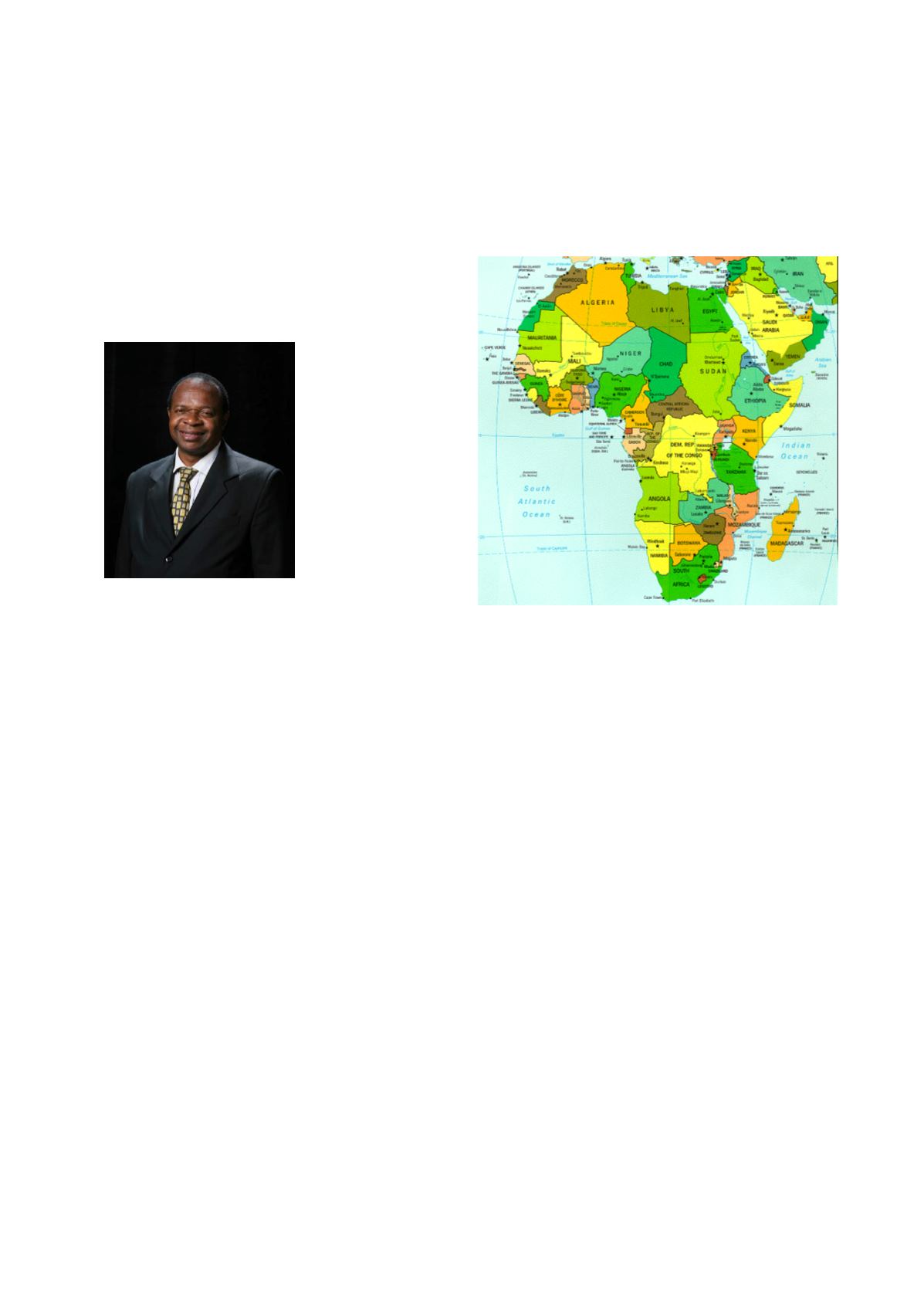

Proceedings of the 18
th
International Conference on Soil Mechanics and Geotechnical Engineering, Paris 2013
Appendix 3
REPORT FROM THE VICE-PRESIDENT OF ISSMGE, AFRICA
TO ISSMGE COUNCIL MEETING, PARIS, 1
st
September 2013
Prof. Samuel U. Ejezie
ISSMGE Vice-President, Africa (2009-2013)
Department of Civil Engineering
University of Port Harcourt
Nigeria
1
INTRODUCTION
This report presents an overview of the state of ISSMGE in
Africa Region and highlights both the progress recorded and the
setbacks encountered in the advancement of ISSMGE ideals in
the Region since the last quadrennial International Conference
held in Alexandria, Egypt in October 2009.
Although Geotechnical engineering problems abound in the
continent, an unbiased assessment of the practice of the
profession world-wide easily reveals that the level here is still
below expectation. The continent is endowed with a rich
diversity of landforms which, naturally, are associated with a
wide variety of geotechnical engineering challenges capable of
attracting public attention and arousing strong interest in the
Soil Mechanics and Geotechnical Engineering profession.
Presently however, opinions differ on the level to which this
interest has been enkindled.
An attempt has been made in this
report to objectively assess this using the relative impact of
ISSMGE in the Region as the main parameter.
2
STATE OF ISSMGE IN AFRICA REGION DURING
2009 – 2013
a)
Member Societies
During the period, 2009 – 2013, the number of potential
member societies identified in Africa Region was about 17
while the maximum number of existing active societies
recorded at any given time was 11. This does not seem
impressive considering the diversity and large number of
independent countries in the Region. However, judging from the
high level of political and social instability plaguing the
continent one may not hesitate to declare that these numbers are
relatively satisfactory. Some
countries in the Region never
knew peace throughout the four year period, while some that
were initially peaceful later got
engulfed in political
upheavals.
These conditions militated against meaningful professional
activities. As a result, rather than record a boom in the number
of active member societies the number was fluctuating most of
the time in consonance with the political situation in the
countries.
At present, the member societies include:
Egypt – Egyptian Geotechnical Society (EGS),
Tunisia – Tunisian Society for Soil Mechanics (ATMS),
Sudan – Sudanese Society for Soil Mechanics and
Geotechnical Engineering (SSSMGE),
Nigeria – Nigerian Geotechnical Association (NGA),
Ghana – Ghana Geotechnical Society (GGS),
South Africa – Geotechnical division of the South African
Institute of Civil Engineering (SAICE),
Francophone Sub-Saharan West and Central Africa
(Cameroon, Senegal, Cote d’Ivoire, Mali, Chad, Upper
Volta, Niger, Benin, Togo, DR Congo) – Comité
Transnational des Géotechniciens d’Afrique (CTGA),
Mozambique – Mozambican Geotechnical Society (SMG),
Kenya – Kenyan Geotechnical Society (KGS),
Morocco – Moroccan Geotechnical Society,
Zimbabwe
A few among these have been inactive but are currently on
the verge of springing back into active mode. In addition, there
are positive indications that Ethiopia, Libya, Uganda, and some
of the countries in the Francophone league are warming up to
form their national societies. This is highly desirable and needs
to be facilitated.
It is pertinent to note here that altogether, African member
societies account for less than 1000 of the ISSMGE’s 19000
members. This, without doubt, is on the low side and
underscores the necessity for aggressive membership drive in
the Region.
AFRICA
Volume 6 - Page 247









